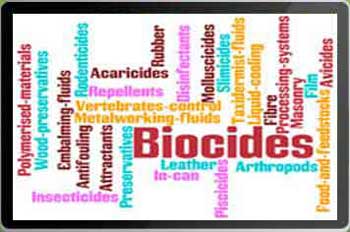The polyamide composite reverse osmosis membrane has the functions of low energy consumption, high water production, and anti-pollution. With this reverse osmosis membrane began to be used in commercial business. Reverse osmosis desalination technology has developed rapidly. The reverse osmosis membrane system has become a very cost-effective processing unit. Especially in water purification technology. Reverse osmosis technology broadens the application of membranes in various areas. Especially in water treatment.
At present, the problem of membrane biological pollution is increasingly obvious in the operation of reverse osmosis water treatment systems. This problem is especially deterioration of the operation in summer. Therefore, effective biological pollution control is necessary. That’s what this article is about-how to prevent biological contamination of reverse osmosis membranes.
Content Tab
- 1. How microbial contamination of the reverse osmosis membrane is formed ?
- 1.1 Formation of adsorption conditions on the membrane surface.
- 1.2 The initial adhesion of the organism to the membrane.
- 1.3 Irreversible adhesion of microorganisms to the membrane surface.
- 1.4 Growth and reproduction of microorganisms.
- 2. How to prevent biological contamination of reverse osmosis membranes
- 3. Conclusion.
1. How microbial contamination of the reverse osmosis membrane is formed?
The formation of microbial contamination in reverse osmosis membranes happens gradually. The specific formation process can be roughly divided into four stages.
1) Formation of adsorption conditions on the membrane surface.
Before the membrane comes into contact with the liquid to be treated but no microbial adsorption occurs. The macromolecular particles are first adsorbed on the membrane surface to form a “thin-film”.
2) The initial adhesion of the organism to the membrane.
The microorganisms close to the surface of this “thin-film” continue to take place Brownian motion and diffusion motion. The transient attachment forms the initial adhesion of microorganisms to the membrane. The shearing force or turbulent action of the treatment liquid can easily remove or peel it off. At this stage, the adhesion of attached microorganisms occurs within a few hours. Usually it can be removed by washing with product water.
3) Irreversible adhesion of microorganisms to the membrane surface.
After 4 to 6 hours, microbial adhesion develops to a stable adhesion. This will affect the local property of the original membrane surface. Such as flatness and smoothness, functional monomer charge characteristics, etc. At this time, adherent microorganisms will not be easily removed by the shearing force or turbulent action of the treatment liquid. That must take chemical cleaning measures.
4) Growth and reproduction of microorganisms.
Stable adherent microorganisms grow and multiply as colonies. Over time, multiple layers of microbial films are formed. These films show spatial non-uniformity. Appropriate temperature conditions will accelerate the metabolism, growth, and reproduction of adherent microorganisms. And it will take to the particles to block the membrane surface.
At this stage, microbial adhesion begins to affect the permeability of the reverse osmosis membrane device. Membrane fouling occurs and deteriorates. Even taking chemical cleaning measures still cannot completely recover the membrane permeability. It can be seen that if there is microbial contamination in the reverse osmosis system. It must be killed and removed before the fourth stage. In this way, effective control of microbial contamination in the membrane system can be ensured.
2. How to prevent biological contamination of reverse osmosis membranes?
Commonly used microbial pollution control methods are physical method, chemical cleaning method, and fungicide method.
The physical method uses ultraviolet, ultrasonic, magnetic treatment and other physical techniques for sterilization. It is environmentally friendly but has no continuous sterilization effect, and the effect is not ideal.
The chemical cleaning method is an after-treatment method for microbial contamination. It cannot effectively inhibit membrane microbial pollution.
The fungicide method is the most effective and economical method for controlling reverse osmosis microbial pollution.
3. Conclusion
The bactericides that control microbial pollution in the reverse osmosis system are divided into two types: oxidizing bactericides and non-oxidizing bactericides.
In the reverse osmosis pretreatment process, Cl2, NaClO, O3, H2O2 are commonly used. Especially Cl2 and NaClO. However, the polyamide separation layer of the reverse osmosis membrane element does not have oxidation resistance.
For this purpose, reverse osmosis feed water needs to be dechlorinated. However, it cannot prevent the reproduction of microorganisms in security filters and reverse osmosis membranes. This cannot avoid the recurrence of pollution.
Non-oxidizing biocides are more adaptable in controlling microbial contamination in reverse osmosis systems. Common non-oxidizing fungicides include isothiazolone, DBNPA, glutaraldehyde, etc.
Considering the chemical properties of reverse osmosis membranes, Isothiazolone and DBNPA are compatible with polyamide membranes and cellulose acetate membranes. Compared with DBNPA, isothiazolone has a longer sterilization time and a larger dosage. This will increase the cost. For reverse osmosis microbial pollution control, DBNPA has more advantages.
Shandong IRO Biocide Chemicals Co.,Ltd.specializes in providing high-quality biocide products. Our products include glutaraldehyde, polyhexamethylene guanidine hydrochloride (PHMG), and DBNPA,etc. Our partners include Basf, Dows&Doupon, etc. We hope you can join us. For other technical articles, please click here.







